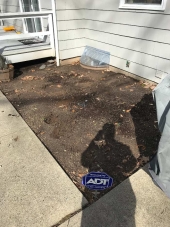I am planning a market garden for the future and want to minimize my inputs from off the farm. I have an idea I want to share that I'm hoping for feedback on, preferably from folks with experience.
My farm will be laid out in 50' x 100' plots, each with 24 beds, (30" x 50' with 20" pathways). I plan to use wood chip mulch to implement the back to eden method. My wife and I have used wood chip mulch for our home garden for 5 years with great success.
Here's where the crazy part comes in.
-Every few years (2 or 3 ?) I want to give a plot a year to rest.
-Instead of just sitting completely fallow, my idea is to plant a combination cover crop (peas? Rye? Alfalfa???) as early as possible in the spring, (I'm in zone 6 so maybe April)
-When cover crops reach maturity, I plan to run meat chickens over the cover crop in chicken tractors, both to shred the cover crop and to add manure.
-when chickens have reached maturity (around august perhaps), I would then implement occultation - cover the entire bed with a black tarp to completely kill off the cover crop and any other weeds. I'd let the tarp cover the plot from the end of the summer until next spring. (I would also have the plot covered with a tarp preceding the cover crop planting).
-I would also reapply a layer of wood chips on this plot at some point, either in the fall before or the fall after cover crops.
My hope is the cover crop and chicken manure combo would replace the need for any additional
compost and fertilizer. Any thoughts? Suggestions? Am I missing something in this scenario?
Thanks!
Dustin







